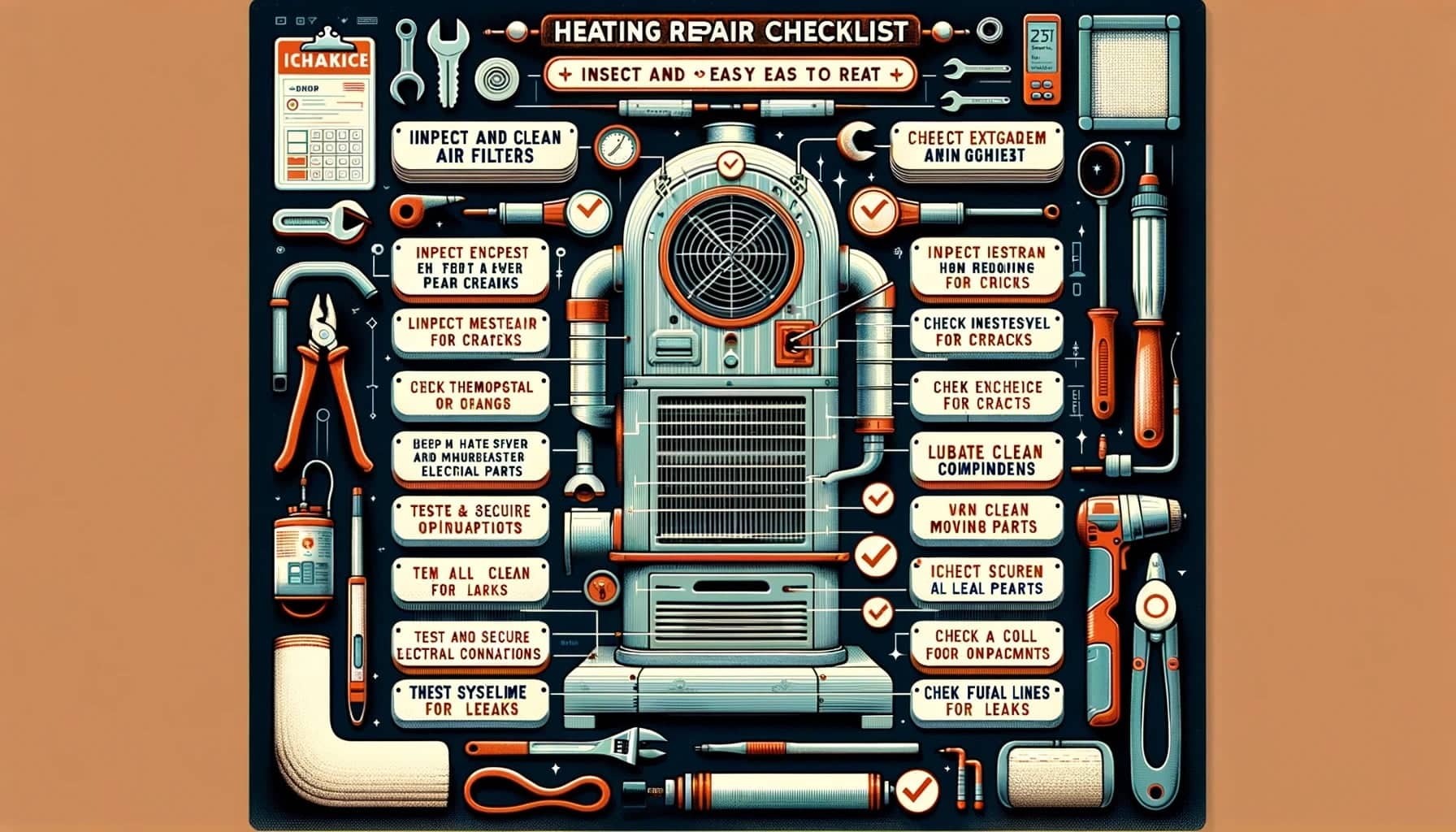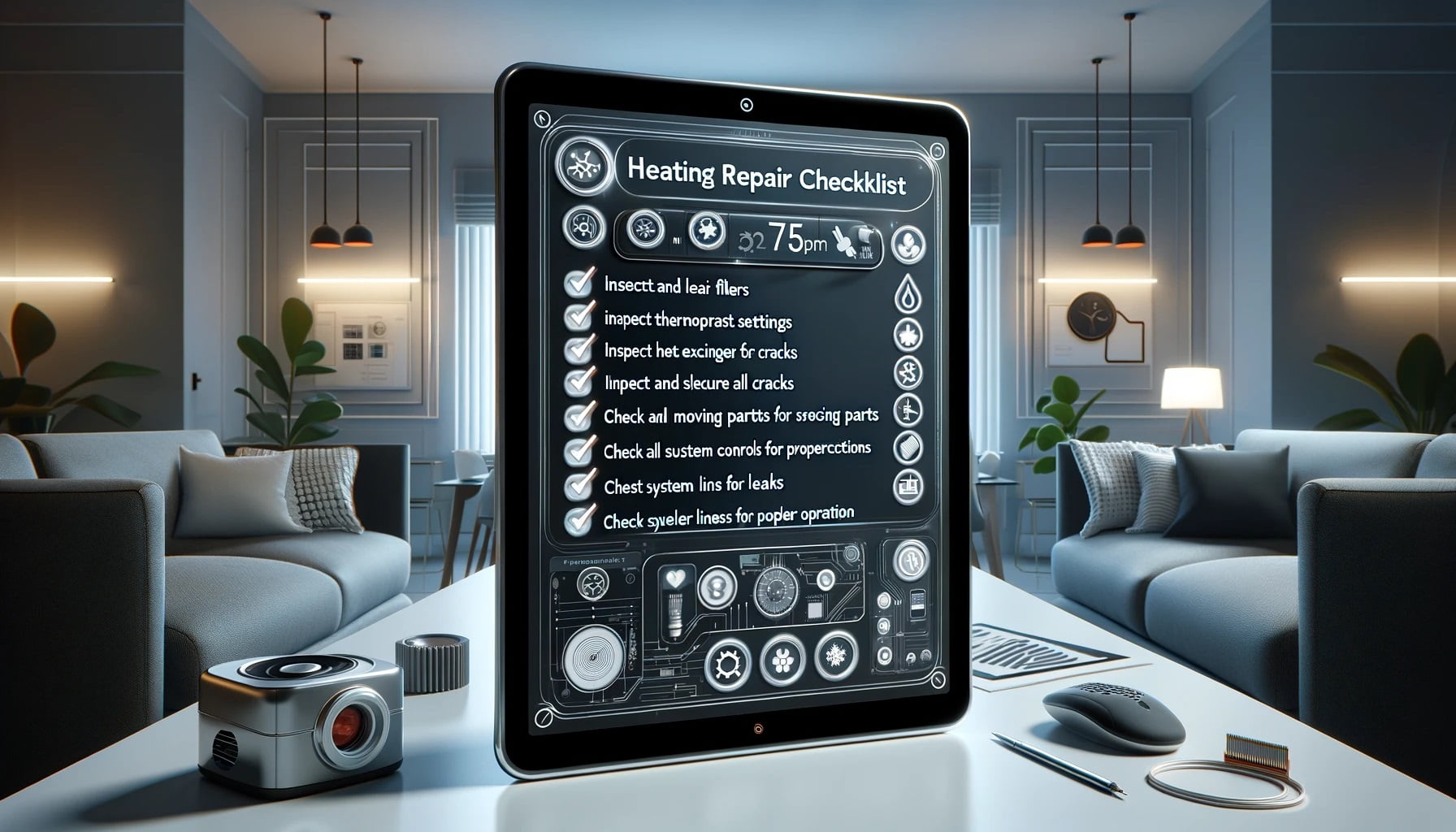Heating Repair Checklist: Spot the Issues Before They Get Worse
In the throes of winter, the importance of a functional heating system cannot be overstated. However, statistics from the Energy Information Administration show that about 6% of households report malfunctions with their primary heating equipment during winter. Proactive identification of problems is key, and this heating repair checklist ensures you spot the issues before they exacerbate.
1-5: Noise and Performance Issues:
- Unusual noises (banging, whistling)
- Frequent cycling
- Inconsistent temperatures
- Slow heating up time
- Soaring energy bills
6-12: Physical Inspections: 6. Inspect for leaks or water pooling
- Check furnace flame (should be blue)
- Examine the heat exchanger for cracks
- Validate thermostat functionality
- Ensure vents are unblocked
- Inspect electrical connections
- Check air filters (replace if necessary)

13-18: Advanced Signs Needing Urgent Heating Repair: 13. Carbon monoxide detector alerts
- A non-functional pilot light
- Soot buildup
- Unpleasant odors
- System age (12+ years typically require more attention)
- Frequent on-and-off cycling
19-23: Professional Maintenance: 19. Annual professional inspections
- Timely repairs over DIY
- Heating repair experts’ advice
- Invest in regular maintenance plans
- Upgrades when recurrent repairs surface
Neglecting the signs calling for immediate heating repair can lead to a 7% decrease in heating efficiency, per the Department of Energy. Regular maintenance checks save you up to 37% on your energy bill and increase your system’s lifespan. Don’t hesitate to contact a heating repair specialist when in doubt; preventative action is far more cost-effective than facing a heating crisis unprepared. Remember, routine heating repair is not an expenditure but an investment in uninterrupted warmth and comfort.



